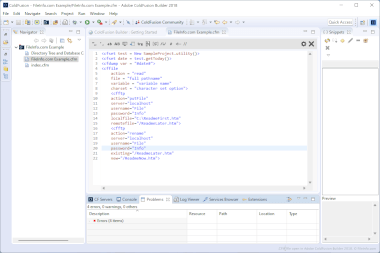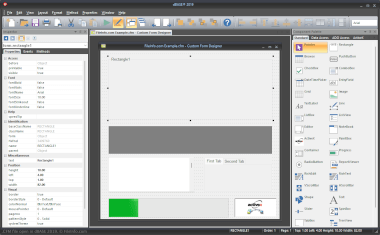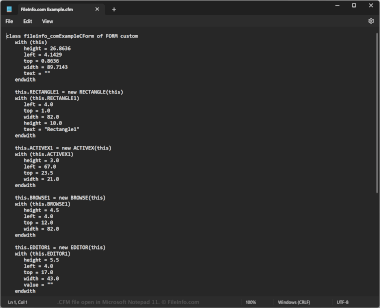.CFM File Extension
ColdFusion Markup File
| Developer | Adobe Systems |
| Popularity |
3.4 | 61 Votes |
What is a CFM file?
A CFM file is a webpage that contains ColdFusion code, or CFML (ColdFusion Markup Language). It is dynamically executed by a ColdFusion web server when the page is accessed by a user. CFM files can run ColdFusion applications and scripts written in CFScript and may reference database information, generate forms, and create PDF reports on the fly.
More Information
You will most likely encounter CFM files only if you are a web developer and integrating ColdFusion functionality into your webpages. Developers typically use Adobe ColdFusion Builder for creating applications in CFML. However, they may use a variety of other CFML IDEs and editors, such as Adobe Dreamweaver, CFEclipse (plug-in for Eclipse), and CFBrackets (extension for the Brackets source code editor).
CFML is a tag-based language that features a syntax similar to HTML and XML. It includes unique tags and support for custom tags for creating dynamic web applications. All CFML tags begin with cf.
NOTE: ColdFusion was originally developed by Allaire, then later bought by Macromedia, and is now distributed by Adobe Systems after acquiring Macromedia in 2005.
How to open a CFM file
ColdFusion developers typically open and edit CFM files with Adobe ColdFusion Builder. You can also open and edit CFM files with source code editors, such as Microsoft Visual Studio Code or GitHub Atom, and plain text editors, such as Microsoft Notepad or Apple Textedit. Source code editors included helpful tools that make reading and editing ColdFusion code easier.
Programs that open CFM files
dBASE Custom Form
| Developer | dBase |
| Popularity |
2.0 | 1 Vote |
A CFM file may also be a custom form created by dBASE, an IDE with database management capabilities. It contains information about a form, including the placement of components within the form, such as entry fields, buttons, images, and progress bars. dBASE users create custom forms to configure the design of other forms (.WFM files) that make up the user interface (UI) for how end users will enter or modify data in a program featuring a dBASE database.
More Information
dBASE is a Windows program that provides various features for managing databases, building programs, and compiling them. In the IDE, forms function as the "window" to how users will interact with the application once compiled. Therefore, when you configure forms, you are configuring the UI.
Additionally, custom forms function similarly to templates, allowing you to configure the layout of components on which other forms are based. For example, you might create a custom form with a logo or design at the bottom of the form that you want to appear on all the other forms.
dBASE users create custom forms via the Custom Form Designer in dBASE and organize them in projects (.PRJ files). dBASE saves CFM files in the following directory by default:
C:\Users\[user]\AppData\Local\dBASE\dBASE[version]\Bin
How to open a CFM file
You can open CFM files with dBASE in Windows. For example, you can open a CFM file by selecting File → Open.
Opening a CFM file with a text editor
Since CFM files are saved in plain text, you can also open them with a text editor, such as Microsoft Notepad (Windows) or Apple TextEdit (Mac). You may need to rename the .cfm file extension to .txt for the text editor to recognize it.
When opened in a text editor, you can modify the properties of the custom form in the CFM file. However, if you incorrectly edit the file, you may inadvertently break the custom form.


